#Diamantina River
Text
The largest were traded from the Maiawali people of the Diamantina River to the south-east.
"Design: Building on Country" - Alison Page and Paul Memmott
#book quote#design#building on country#alison page#paul memmott#fishing net#indigenous australia#aboriginal australian#maiawali people#diamantina river#nonfiction
0 notes
Photo

a big drop | Olympus OM-1 | Kodak Portra 800 | 2022
#daniloz#analog photography#analog 35mm#35mm#35mm film#35mm photography#35mm color film#natur#landscape#waterfall#river#fall#rock#chapada diamantina#olympus om-1#olympus photography#kodak#Kodak Portra 800
184 notes
·
View notes
Text
#oldster2you#selling on ebay#records#little river band#diamantina cocktails#vinyl records#ebay deals
0 notes
Text
CHAPADA DIAMANTINA NATIONAL PARK 🇧🇷

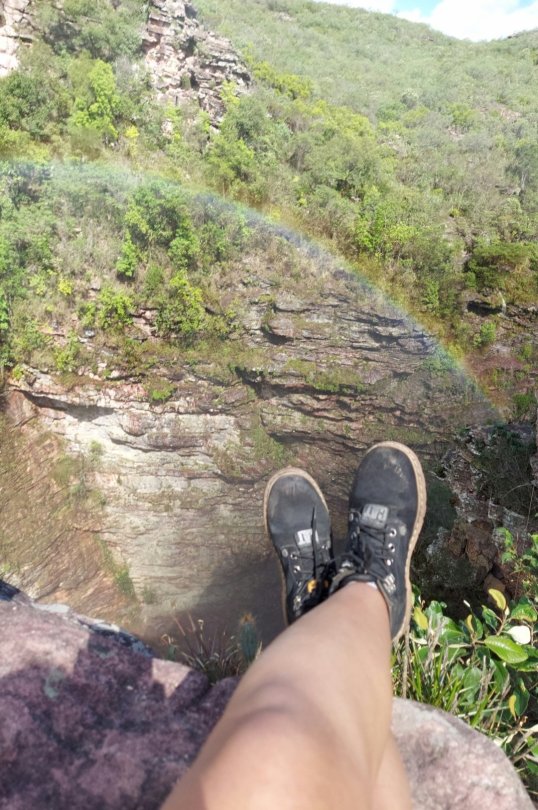

#themes#temas#backpacking#photos#mountains#sunset#meus textos s2#chapada diamantina#Brasil#brasil aesthetic#river#waterfall#landscape#hills#paradise#travelling#explore#wanderlust#viajero#viagem#viajes#brazil#Brazilian#bahia
1 note
·
View note
Text
Last 3 films you watched:
Whatever Happened to Baby Jane? (1962)
House of Dark Shadows (1970)
Indiscreet (1958)
4 films on your to-watch list:
Night of Dark Shadows (1971)
Shadow of a Doubt (1943)
Peyton Place (1957)
Come Spy With Me (1967)
Last 3 songs/artists you listened to:
Listen People; Herman's Hermits
You Really Know How to Hurt a Guy; Jan & Dean
You Really Got Me; Kinks
4 songs/artists on your to-listen list:
here are some albums that I thrifted recently that I haven't given a proper listen to yet:
Slue-Foot Shoe's Golden Horseshoe Revue; Disneyland Records, Betty Taylor et. al
Rodgers and Hart's Pal Joey; Hayworth, Sinatra, Novak, et. al
Lawrence of Arabia Original Soundtrack Recording; Maurice Jarre, London Philharmonic
Diamantina Cocktail; Little River Band
Last 3 books you read:
tbqh i haven't been reading much but i've picked at these:
The Mystery of Collinwood, Marilyn Ross
Secrets of the Tomb: Skull and Bones, the Ivy League, and the Hidden Paths of Power, Alexandra Robbins
I don't know that this really counts but uh. Maine Revised Statutes 1964 Volume 3
4 books on your tbr:
Frankenstein; or, The Modern Prometheus, Shelley
The Count of Monte Cristo, Dumas
The Castles of Athlin and Dunbayne, Radcliffe
My Cousin Rachel, du Maurier
stolen from: @retrograderesemblance and @pagetreader, thank you very much friends !
tagging: @weirdalfemme ; @boltlightning; @tortoisesshells; @dying-suffering-french-stalkers; @mirthcrowned; @criticalfai1ure
7 notes
·
View notes
Link
23 notes
·
View notes
Text

This is Chapada Diamantina, It’s located in Bahia state. It’s like a Grand Canyon, in US but our has a luxurious green vegetation, water fall, rivers and sculpted stones.
2 notes
·
View notes
Text
Wednesday, May 15, 2024: 10am ET: Feature LP: Little River Band - Diamantina Cocktail (1977)
Diamantina Cocktail is the third studio album by the Australian rock group Little River Band. The U.S. version of the album was actually a partial compilation of the Australian versions of After Hours and Diamantina Cocktail. Also noteworthy was that three songs–“Broke Again”, “The Inner Light” and “Another Runway”—were radically different mixes from those released on the original Australian…

View On WordPress
0 notes
Text
Brazil is a country known for its vibrant culture, stunning landscapes, and diverse population. From the bustling cities of Rio de Janeiro and Sao Paulo to the lush rainforests of the Amazon, Brazil has something to offer every traveler. However, beyond the well-known tourist destinations, there are remote areas of Brazil that are often overlooked but are just as fascinating and beautiful.
One such remote area is the Pantanal, the world's largest tropical wetland area. Located in the western part of Brazil, the Pantanal is home to a wide variety of wildlife, including jaguars, capybaras, and giant otters. The region is a paradise for nature lovers and birdwatchers, with over 650 species of birds calling the Pantanal home. Visitors can explore the wetlands by boat, on foot, or on horseback, and experience the unique ecosystem up close.
Another remote area of Brazil worth exploring is the Chapada Diamantina National Park, located in the state of Bahia. This stunning region is known for its dramatic landscapes, including towering waterfalls, deep canyons, and crystal-clear rivers. Visitors can hike through the park's rugged terrain, swim in natural pools, and marvel at the breathtaking views from the top of the Chapada Diamantina plateau. The park is also home to a number of caves, some of which are open to the public for exploration.
In the northeastern part of Brazil lies the remote region of Jalapão, a vast wilderness of sand dunes, waterfalls, and rock formations. Known for its otherworldly landscapes, Jalapão is a popular destination for adventure seekers looking to escape the crowds and immerse themselves in nature. Visitors can explore the region by 4x4 vehicle, hike to hidden waterfalls, and camp under the stars in the desert-like environment. Jalapão is also home to a number of natural hot springs, where visitors can relax and unwind after a day of exploring.
For those interested in indigenous culture, the remote region of the Xingu Indigenous Park is a must-visit destination. Located in the state of Mato Grosso, the park is home to several indigenous tribes, each with their own unique customs and traditions. Visitors can learn about the history and culture of the Xingu tribes, participate in traditional ceremonies, and purchase handmade crafts from local artisans. The park is also a UNESCO World Heritage Site, recognized for its cultural and ecological significance.
In the far north of Brazil lies the remote region of the Amazon Rainforest, the largest tropical rainforest in the world. This vast and biodiverse region is home to a staggering array of plant and animal species, many of which are found nowhere else on Earth. Visitors to the Amazon can explore the jungle by boat, hike through the dense vegetation, and spot wildlife such as monkeys, sloths, and colorful birds. The region is also home to several indigenous communities, who offer guided tours and cultural experiences for visitors looking to learn more about their way of life.
While Brazil is known for its bustling cities and popular tourist destinations, the country's remote areas offer a unique and unforgettable travel experience. From the wetlands of the Pantanal to the sand dunes of Jalapão, these regions are rich in natural beauty and cultural heritage, waiting to be explored by adventurous travelers. Whether you're a nature lover, an adventure seeker, or a cultural enthusiast, Brazil's remote areas have something to offer everyone. So pack your bags, venture off the beaten path, and discover the hidden gems of this diverse and captivating country.
0 notes
Text
Seasonal Flooding of the Diamantina River
#TheOverviewEffect #OurHomeInSpace #FromEarthOrbit #PlanetEarth
0 notes
Text
Site Visit Reflection
Key Takeaway: the precincts' principles surround sustainability, innovation, Indigenous engagement + representation, & community.
THOUGHTS
General
anxiety around walking so much for 2 hours due to my ankle injury -> very big space which could definitely use improved accessibility (wasn't actually particularly close to any public transport)
lots of sound from flights makes it hard to hear anything outside
really nice wind tunnel through the shed (can be very strong -> quite cold & slammed door, etc.)
Maritime Green is quite abstract
Hard to work on Workshops because they seem to have everything from art -> woodworking -> sport, etc. (important to remember that 1 of the challenges here is about more engagement between the venues & residents)
Water is really central to the site & EDQ's development vision
Creative Observation
Tank could be fun to experiment with -> don't really know what to do w/ it yet though
Ground around the workshops is quite cracked, rough, & raised -> adds to the "real-world" vibe, but isn't necessarily great for comfort/accessibility
Grass on the hill near the Maritime Green is quite spiky (not particularly comfy)
Subtropical rainforest plants have been incorporated by being planted in large pots -> feel like there aren't enough
Wind is quite cold because it's near the river
Maritime Green feels very connected to nature, whereas Workshops feel quite 'industrial' (unsure if this is the right word but the area is very clearly manmade) -> feel more of an emotional connection to the Maritime Green but feel like there's potentially more opportunities within the Workshops challenges in Client Brief
Site is actually quite close to the ocean
Questions (& Answers)
What was the waterfront when it was open to the public 150 years ago? industrial port that most recently exported sand, gravel, concrete, etc., which were moved into ships in big warehouses before being dropped -> prior, had cold storage in shipping containers for QLD world exports (e.g. fruit, sugarcane, etc.) (answered by Vanessa from EDQ)
Is the beach on the river? Yes! (saw on way back to ferry) -> not really much of a beach lol
What kind of wildlife frequents the area? How can we interact with them in a way that keeps both parties safe?
POTENTIAL IDEAS
Workshops
escape rooms (themed?)
maze
art workshops -> w/ focus on a particular minority group (e.g. Indigenous art/class for Indigenous ppl)
cooking classes -> perhaps linked to traditional Indigenous foods of area/utilising Indigenous plants
community garden of Indigenous plants (maybe like the one at Southbank where there's "picking") -> classes on the different uses/applications of the plants
perfumes made of Indigenous plants
showcase of Indigenous fashion design
discounts on events for tenants to increase community engagement
swimming pool -> defeats purpose of opening up waterfront, though? (could maybe do an infinity pool?)
big tree in middle of area -> affirmation tree? fairy lights? tree-stage?
time capsules
Maritime Green
tour on ferry/watch smth on shore from ferry -> Vanessa said that EDQ does not have authority on the water (but can talk to other gov department pretty easily)
water park/water play area for children
park exercise equipment along waterfront/Kingsford Smith Drive
giant communal board games
social sports (tournaments?)
birdbaths
bird-feeding (e.g. Springbrook National Park)
explore an old-time industrial export ship (similar to Diamantina @ Maritime Museum)
interactive educational games for kids (similar to those in QLD Museum's Playasaurus Garden)

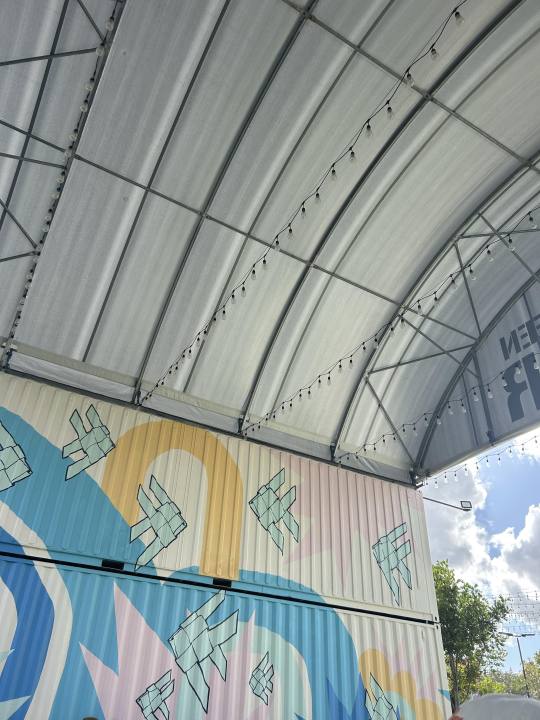


#blog#journal#creativejournal#creativeconcept#creativeconceptjournal#kkb285#creativeenterprisestudio2#assessment#hamilton#northshorehamilton#qld#queensland#maritimegreen#workshops#edq#economicdevelopmentqld#ecnomicdevelopmentqueensland
0 notes
Text
Chapada Diamantina
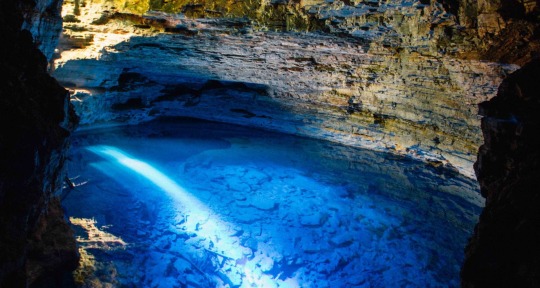
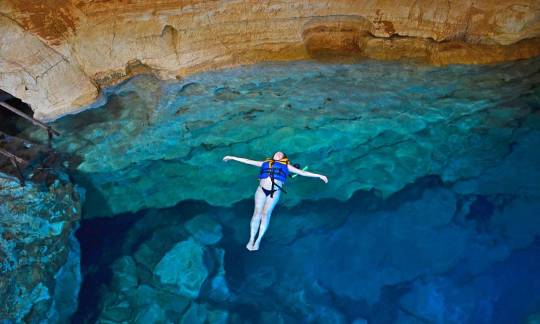
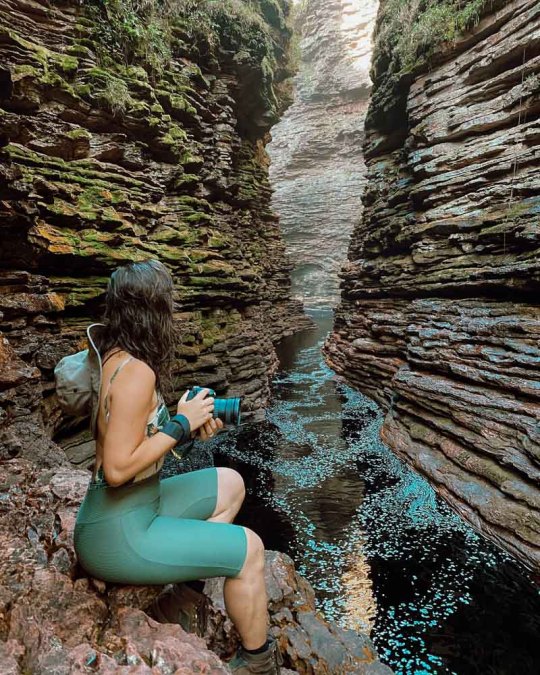

TLDR: Perfect place to see nature, swim in crystal waters, trekking, and way more.
Chapada Diamantina Portuguese for the "Diamond Plateau") is a region of Bahia state, in the Northeast of Brazil.
The Chapada Diamantina lies at the center of Bahia State and forms the northern part of the Espinhaço Mountain Range. It has approximately 38,000 km2 (15,000 sq mi) and encompasses 58 municipalities. Technically this region is considered a part of the caatinga biome and contains some of its highest elevations, most of it above 500 meters (1,600 ft). The vegetation; a product of the physiographic conditions, is known as cerrado, and consists of rocky plains, dry forests, and caatinga desert vegetation, all of which harbour a great deal of biodiversity and unique endemisms. The region is considered to have a Mesotermic climate, of the Cwb type, according to Köppen Climate classifications. It is normally quite cooler than its surrounding areas, with an average annual temperature under 22 °C. The territory of the Chapada Diamantina runs roughly between the cities of Mucugê (13°00′S 41°22′W) to the south, Andaraí (12°48′S 41°20′W) in the southeast, Lençóis (12°33′S 41°23′W) in the northeast, and Palmeiras (12°31′S 41°35′W) in the northwest. This region is named the Serra do Sincorá Ridge. However, the city of Ibicoara, near the southern limits of Chapada Diamantina, is also becoming important. The Sincorá Ridge is North–South oriented and has a length of 160 km and 20 to 30 km of width.
It has huge canyons with rivers of brownish waters and several waterfalls. The high-altitude grasslands are known locally as Gerais. The trails were once used by miners in their search for diamonds. From Lençóis, one of the most important cities in the area, one can find quite a few ecotourism agencies as well as independent guides.[1] Among the main attractions are the Morro do Pai Inácio (Pai Inácio Hill), Cachoeira da Fumaça, Mixila Waterfall, Sossego Waterfall, and the Vale do Pati which is considered the best trekking destination in the country. Rock climbing is a relatively new activity, but is developing quickly as some local and outside climbers are opening more and more routes, mainly in the city of Lençóis and at Vale do Capão, district of Palmeiras, and at Igatu, district of Andaraí. Lençóis, one of the main cities, is 428 kilometers (266 mi) from Salvador and can be reached by car, bus or plane. Another important city is Iraquara. It has a lot of caves, where prehistoric rock art and other evidence of early human habitation can be found. For this reason, Iraquara received the nickname "City of Caves".
In 1985, the Chapada Diamantina National Park was created with its headquarters in Palmeiras.
0 notes
Photo

all for a picture | Olympus OM-1 | Kodak Portra 800 | 2022
#danilo#analog photography#analog 35mm#35mm#35mm film#35mm photography#35mm color film#nature#valley#river#canyon#chapada diamantina#olympus om-1#olympus photography#kodak#Kodak Portra 800
42 notes
·
View notes
Text
0 notes
Photo
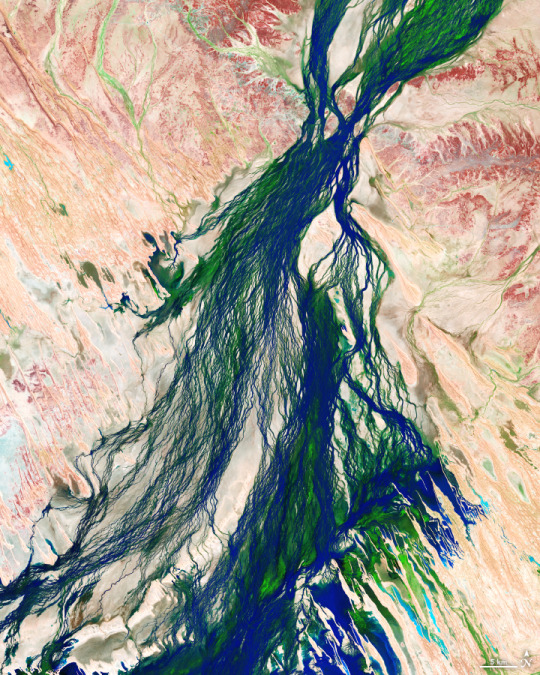

Seasonal Flooding of the Diamantina River The Diamantina River in Australia runs southwest from northern Queensland toward Lake Eyre (Kati Thanda) in South Australia—the lowest point on the continent. It is one of several rivers in the Lake Eyre Basin, which is situated in Australia’s desert interior and drains approximately 15 percent of the continent. For much of the year, its beds remain dry. However, seasonal rainfall sends water coursing through its channels and transforms the otherwise parched landscape. These false-color images illuminate the results of this phenomenon. The Operational Land Imager (OLI) on Landsat 8 captured the images on April 7, 2023, as floodwaters from rainfall in February and early March flowed through the Diamantina River catchment. The images combine the shortwave infrared, near infrared, and red light (OLI bands 7-5-4). In this configuration, bare earth appears brown or reddish, vegetation is green, and sediment-laden water and saturated soil are shades of blue. Bursts of vegetation growth that tend to follow in the wake of the floodwaters appear to be cropping up. A similar pulse of green is visible in images acquired in 2018. The wide view (top) shows a textbook example of an anabranching river, according to Sara Polanco, an expert in landscape dynamics and a lecturer at The University of Sydney. In contrast to the channels of braided rivers, which shift around within the riverbed, the many channels in anabranching rivers are hemmed in by semi-permanent islands stabilized by vegetation. A detailed look at the lower-right portion of the wide view reveals other notable features. Here, some of the floodwaters divert into north-northwest trending ridges that are part of a fossil landscape of wind-formed dunes. As water flows through the troughs, it forms several small delta-like features, which some researchers refer to as floodouts. “They are ubiquitous in Australia,” said Polanco. “Sometimes it looks like the river channels just disappear, but when these systems are in flood, the connection between the channels and the surrounding landscape is finally revealed.” About every eight years, rivers in the basin reach Lake Eyre. The Diamantina River has historically provided 75 percent of the lake’s water. Floodwaters have yet to flow that far this year, and it’s uncertain if there will be enough water to reach the lake. Most is lost to evaporation and transpiration along the way. Recent observations and the three-month streamflow forecast, from Australia’s Bureau of Meteorology, show levels near or slightly above the median, relative to historical records. On May 1, 2023, the bureau still had a minor flood warning in place for the town of Birdsville, about 130 kilometers (80 miles) downstream of these images. However, the report noted that flooding is easing and the river should soon dip below the minor flood level. NASA Earth Observatory images by Allison Nussbaum, using Landsat data from the U.S. Geological Survey. Story by Lindsey Doermann.
0 notes
Text
First-Class Travel to Igatu - Exploring the Mystery and Beauty of Brazil's Ancient Villages
Uncovering the Enigmatic Charm of Igatu
Igatu is a small village located in the heart of Brazil that used to be a hub for diamond mining during the 19th century. Despite its humble beginnings, Igatu has managed to maintain its enigmatic charm over the years, making it a must-visit destination for anyone seeking a glimpse of Brazil's ancient villages.
Ancient Architecture at Igatu
One of the most fascinating aspects of Igatu is its architecture. The village features impressive multi-story buildings made of stone, which have stood the test of time and continue to exude a sense of ancient grandeur. Visitors to Igatu can explore intricate alleyways and hidden corners, and get lost in the village's timeless beauty.
Stunning Natural Scenery
Igatu is located in a breathtakingly beautiful region of Bahia, Brazil, surrounded by lush vegetation, cascading waterfalls, and crystal clear rivers. Visitors to Igatu have the opportunity to explore its natural surroundings and hike through its rugged terrain. The views from the top are simply stunning, and a perfect backdrop for stunning holiday photos.
The Mystical Side of Igatu
Igatu is known for its mystical and spiritual aura, which is reflected in the village's ancient customs and traditions. The village is home to a variety of temples, shrines, and altars that are used for spiritual practices. Visitors can partake in these activities and experience the magical side of Igatu.
Overall, Igatu is a unique and intriguing destination that has managed to preserve its ancient charm. Visitors to Igatu can expect to be transported to a different time and place, and experience Brazil's rich history and natural beauty in all its glory.
The Ancient Villages of Brazil: A Historical Overview
Introduction
Brazil is home to some of the most enchanting ancient villages in the world, and exploring their history provides an insight into the country's rich cultural heritage. These villages offer a glimpse into the way of life, architecture, and customs of Brazil's indigenous and colonial populations.
The First Villages
The first known settlements in Brazil date back more than 10,000 years. The indigenous tribes settled near rivers and coastlines where they could hunt, fish, and grow crops. These tribes developed unique cultures and customs that have been passed down through generations.
The Colonial Period
In the 16th century, the Portuguese arrived in Brazil and began to establish colonies and trading posts along the coast. They built many ornate churches, monasteries, and forts that still stand today in cities like Salvador and Olinda. As they expanded inland, they established farms, ranches, and mining operations that led to the formation of several small towns.
The Gold Rush Era
In the 18th century, gold was discovered in the Minas Gerais region, attracting a rush of fortune seekers from all over the world. They settled in the small villages surrounding the mines and built elegant mansions, churches, and public buildings. Cities like Ouro Preto, Mariana, and Diamantina became bustling centers of commerce and culture.
The Decline and Preservation
As the gold reserves dwindled in the 19th century, many of the villages were abandoned, and their buildings fell into disrepair. However, in recent years, there has been a push to preserve these historic villages and promote tourism. Today, many of them have been restored, and visitors can explore their unique architecture, traditions, and stories.
Brazil's ancient villages are a testament to the country's rich history, culture, and traditions. From the indigenous settlements to the colonial towns, each village has a unique story to tell. Visiting these villages is a great way to learn about Brazil's past and experience its vibrant present.
Arriving in Salvador
Before embarking on your journey to the quaint village of Igatu, you will first need to arrive in Salvador, the capital city of Bahia. Salvador has an international airport, Deputado Luís Eduardo Magalhães, which services many major airlines. Upon arrival, you can take a taxi from the airport to the Salvador bus terminal, where buses depart daily for Andaraí, the nearest town to Igatu.
Taking the Bus
The journey from Salvador to Andaraí by bus takes approximately six hours. Buses are comfortable, air-conditioned, and run daily. Once in Andaraí, you can take a local bus or taxi to Igatu, which is a short 20-minute drive away.
Taxi Services
If you prefer a more private and comfortable mode of transportation, you can arrange a private taxi service from Salvador directly to Igatu. This option is more expensive but allows you to travel in style and comfort.
Traveling in Comfort
Regardless of your mode of transportation, we recommend dressing comfortably and carrying light baggage. It’s also advisable to carry a small amount of cash, as some remote areas along the route may not accept credit cards.
Enjoy the Journey
The journey from Salvador to Igatu is an enjoyable one filled with scenic views and breathtaking landscapes. We recommend sitting by the window to take in the beauty of the Brazilian countryside. Don't forget to carry a snack and some drinking water to keep yourself hydrated throughout the journey.
Traveling first class to Igatu does not have to be complicated. By following these tips, you can arrive in Igatu comfortably and stress-free, ready to explore the ancient village and all its hidden treasures. Remember to carry a camera and plenty of curiosity to make the most of your trip.
The Top Attractions and Activities in Igatu
1. Visit the Mystical Waterfall
Explore the stunning waterfall and dive into the clear waters at the Mystical Waterfall in Igatu. This famed attraction is a natural treasure, with cascading water and stunning scenery. Along the way, you can see loads of lush vegetation and wildlife species. So, pack your bags, bring your swimsuit and enjoy the refreshing water at the Mystical Waterfall.
2. Discover the Enchanted Village of Igatu
The Enchanted Village of Igatu is an ancient village that offers a cultural and historical excursion. Wander through the narrow streets of the village, and explore its quaint architecture, traditional houses, and observatories. It is also a perfect place for photography enthusiasts. You'll indulge in the rich culture and history of this ancient village while exploring Igatu.
3. Hike through the Chapada Diamantina National Park
The Chapada Diamantina National Park is the ideal destination for hikers. The park's stunning geological formations, which include caves, waterfalls, rivers, and hills, are a must-see. You can also go camping and swim in the natural pools within the park's vicinity. So, grab your hiking boots and hit the trail to the Chapada Diamantina National Park.
4. Experience the Diamond Expedition Tour
To uncover the rich history of the diamond rush era, take a Diamond Expedition Tour. You'll learn about diamond mining, including its history, mining techniques, and processes. You can also purchase diamond souvenirs from local merchants. The Diamond Expedition Tour is ideal for history lovers.
5. Visit the Cave of Lapão
Explore the mystery of the cave of Lapão, with its beautiful underground lakes and stunning rock formations. The cave system is awe-inspiring, and you'll be amazed by its rich biodiversity. You'll see several species of birds and bats, and if you're lucky, you may even spot the rare albino bat.
In conclusion, Igatu is an excellent destination for those seeking adventure, culture, and history. With its stunning natural landscapes, cultural landmarks, and mystical scenery, you are sure to have a memorable experience. Plan your next trip to Igatu and have an exciting adventure.
Where to Dine: A Guide to Igatu's Best Restaurants
After exploring the ancient villages of Igatu, you may be wondering where to find the best dining options. Look no further than these top restaurants:
1. Casa de Maria
Located in the heart of Igatu, Casa de Maria offers visitors a cozy dining experience with traditional Brazilian dishes. Their specialties include Moqueca de Peixe, a seafood stew cooked in coconut milk, and Feijoada, a hearty black bean stew served with pork and rice. This restaurant is known for its welcoming atmosphere and delicious homemade desserts. Be sure to try the passion fruit mousse!
2. Restaurante da Praça
For a more upscale dining experience, check out Restaurante da Praça. This restaurant overlooks the main square in Igatu and offers a menu of Brazilian and international dishes. Start with their famous cheese bread and follow it up with a grilled steak or pasta dish. Don't forget to save room for dessert, as their chocolate lava cake is a must-try.
3. Lua de Pedra
If you're in the mood for pizza, Lua de Pedra is the spot for you. This restaurant offers a variety of pizza options with unique toppings such as goat cheese and arugula or caramelized onions and bacon. They also have a selection of vegetarian options and delicious cocktails.
4. Bar e Restaurante do Dida
For a more laid-back experience, head to Bar e Restaurante do Dida. This restaurant offers a menu of classic Brazilian dishes such as Acarajé, a bean fritter stuffed with shrimp and spices, and Bobó de Camarão, a creamed shrimp stew. Enjoy your meal with a cold beer and live music on the weekends.
No matter where you choose to dine in Igatu, you're in for a treat. Be sure to try the local specialties and soak up the cozy atmosphere of these charming restaurants.
Finding the Perfect Accommodation in Igatu
Location Matters
When visiting Igatu, it's best to choose accommodation close to the village center. This way, you can walk around and explore the town without having to rely on transportation. Many of the guest houses and hotels in Igatu are located in the heart of the village, so it's easy to find one that meets your needs.
Comfort and Amenities
When it comes to accommodation, comfort and amenities are key. Look for a hotel or guest house that offers amenities such as air conditioning, free Wi-Fi, and comfortable beds. Additionally, some hotels offer extras such as swimming pools, spa services, and onsite restaurants.
Authenticity and Charm
One of the best things about staying in Igatu is the opportunity to experience the authentic charm of the village. Many of the guest houses and hotels in Igatu have been restored from traditional houses and presented to visitors with all the modern amenities. By choosing one of these properties, you can experience the charm of the village while still enjoying the comfort of modern amenities.
Cost
Finally, when looking for accommodation in Igatu, consider your budget. There are options for all budgets, from luxury hotels to budget-friendly guest houses. Do some research and book in advance to get the best rates.
Overall, finding the perfect accommodation in Igatu comes down to location, comfort, authenticity, charm, and cost. Keep these factors in mind when searching for the ideal place to stay, and you're sure to have a memorable trip to this enchanting village.
Exploring Beyond Igatu: Day Trips and Excursions
1. Visit Riachao do Jacuipe
Located just 65km from Igatu, Riachao do Jacuipe is a small town famous for its traditional crafts and ceramics. If you love arts and crafts or want to learn more about the traditional culture of Brazil, then this is the perfect day trip for you. Be sure to visit the local market where you can buy handmade crafts and textiles from the artisans themselves.
2. Go Hiking in Chapada Diamantina
The Chapada Diamantina National Park is a must-visit destination for nature lovers and thrill-seekers alike. Just a short drive from Igatu, it offers a range of hiking trails that pass through stunning natural landscapes, including waterfalls, caves, and canyons. The Poco do Diabo Waterfall, which can be reached by a moderate 4km hike, is a popular spot for swimming and picnics.
3. Explore the Caves of Lapa Doce
Located about 40km from Igatu, Lapa Doce is a massive natural cave system that stretches for over 850m. Visitors can take a guided tour through the caves, where they can see stunning rock formations, underground rivers, and even rare cave-dwelling animals. This is a great day trip for families or anyone who loves nature and adventure.
4. Visit Lençóis
Lençóis is a charming colonial town located about 35km from Igatu. With its colorful houses, cobblestone streets, and lively town square, it's a great place to soak up the culture and history of the region. There are also plenty of shops, restaurants, and cafes to explore, making it a fun day trip for anyone who loves to shop and eat.
5. Relax at Poço Azul
If you're in need of some relaxation and rejuvenation, then head to Poço Azul. This natural pool is famous for its crystal-clear blue waters, which are said to have healing properties. Visitors can swim in the pool, sunbathe on the surrounding rocks, or simply relax and take in the stunning natural beauty of the area.
No matter what your interests are, there's no shortage of day trips and excursions to explore beyond Igatu. From nature hikes and cave explorations to shopping and relaxation, there's something for everyone in this beautiful part of Brazil.
Read the full article
0 notes